Hygiene in changing times - where are we headed?
Since the start of the coronavirus pandemic, cleanliness and hygiene in public spaces have taken on a different role than in the past. Be it in restaurants, government agencies, schools or offices – certain cleaning regulations and procedures are changing due to the virus. It is a challenge that will doubtless play a major role in the future.
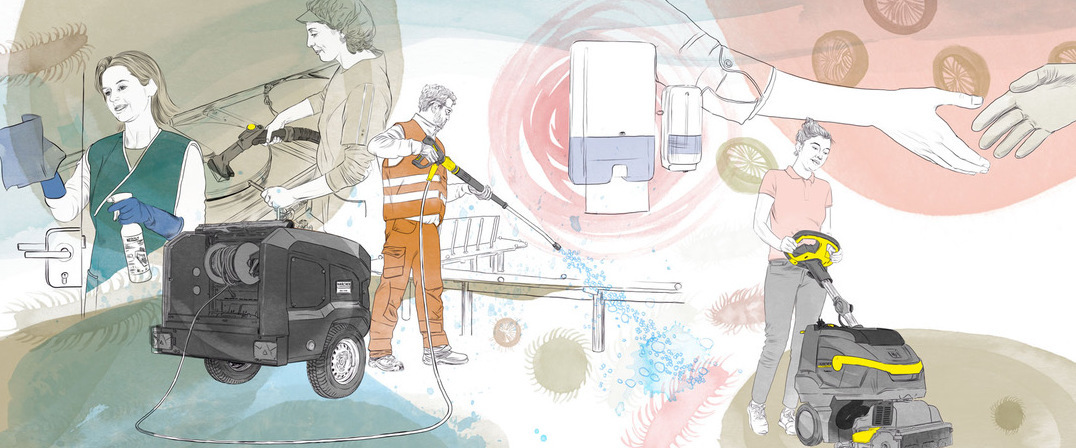
The hygiene requirement is individual
The solutions being adopted include the standardized use of particular methods, training cleaners using digital processes, and developing hygiene concepts, as illustrated by one example from Russia.
On an individual level, the change goes deeper, as every person must decide for themselves what degree of hygiene they wish to enforce. How are perception and behavior changing, and what opportunities do we have to maintain or improve well-being? Find out more in our interview with psychologist Dr Enno Maaß, Deputy Chair of the German psychotherapist association, Deutsche PsychotherapeutenVereinigung.
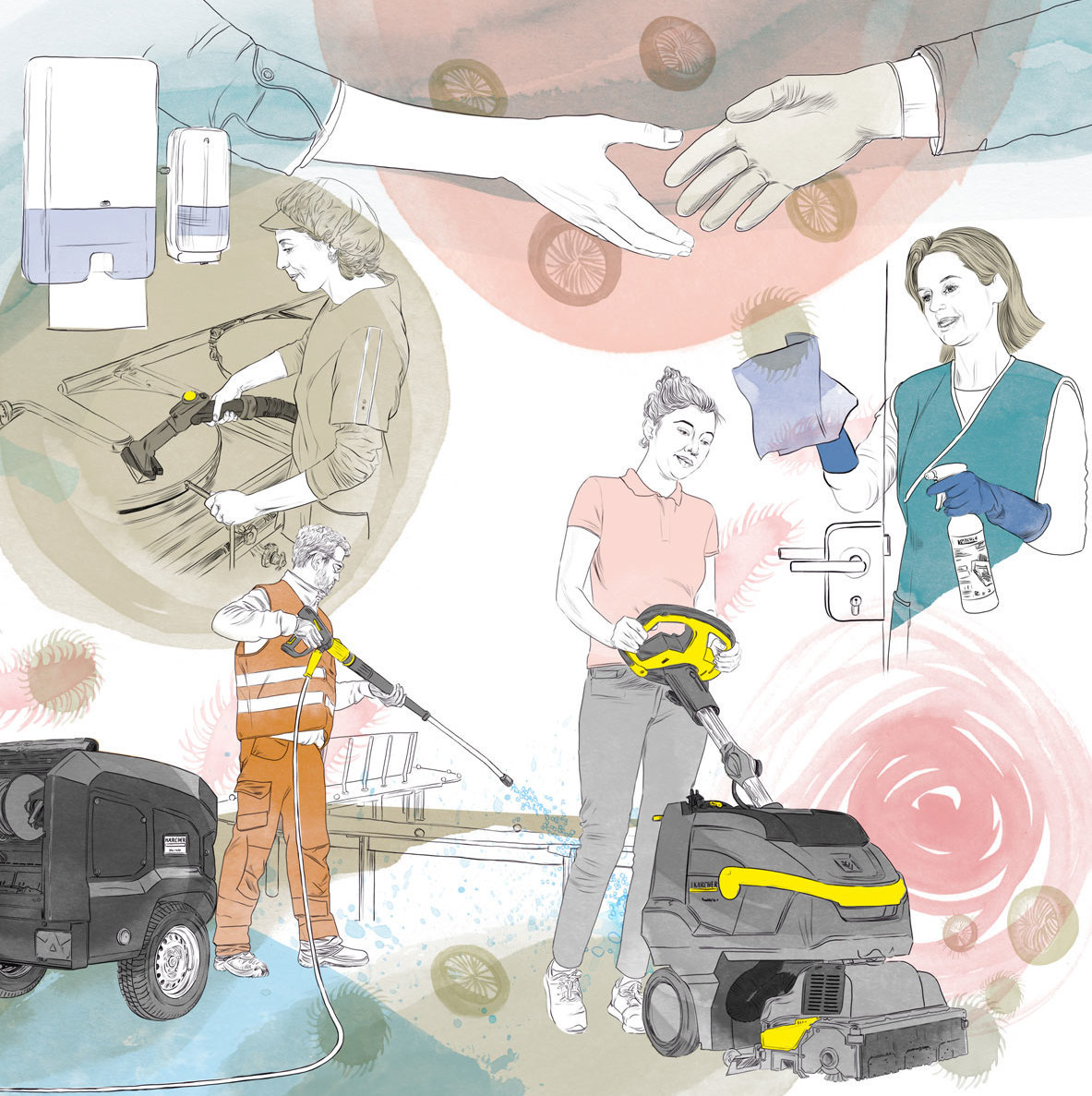
100 percent hygiene? It is only really possible in clean rooms.
Perfect hygiene is not realistic in everyday life, as there always remains a certain risk of germ transfer. Generally speaking, well-performed cleaning is more effective than poorly executed disinfection because what is important is to remove the breeding ground or host for pathogenic germs, bacteria, fungi and viruses.
The dirt pathway …
Daniel Meier, Senior Director Special Sales & Consulting Services at Kärcher, emphasizes that many bacteria are actually harmless. “At the moment, we are just thinking about the negative, but we need countless bacteria to even survive.” Where harmful, pathogenic germs are concerned, the challenge is to minimize the risk of infection wherever possible. “In building cleaning and in cleaning of public spaces, the question of "where" is crucial: where is the dirt, where do people come into contact with dirt, and what are the transfer paths of potentially pathogenic germs?”
… and a set of options…
With this in mind, it is important to use the right cleaning methods and devices from the wide range of options. For example, when cleaning surfaces, the cloth-folding method is recommended. “That means using a new side of a cleaning cloth for each surface – once they’ve all been used, change to a new cloth.” This removes germs and stops them from being transferred from one surface to another. When it comes to pathogens that are transferred by contact between surfaces, a high level of cleanliness, hygiene and safety can be achieved in this way. “What’s more, pathogens are not killed by cleaning – that doesn’t happen until the laundry process, where there is an optimum combination of temperature, chemistry and mechanics.” As a result, the use of disinfectants can be reduced to critical areas in a property.
In many areas, manual cleaning can be supported by modern cleaning technology. There is a very wide range of methods that can be combined – depending on the space – to achieve the best possible result. In areas such as sanitary facilities or commercial kitchens, the use of steam cleaners has now become established. Hot water pressure washers can even have a disinfectant effect in children’s playgrounds when used correctly.
Society is changing
Be it in retail, the restaurant trade, or local authorities – all operators of publicly accessible spaces have to deal with the raised awareness of hygiene in society (see “From handwashing to arguments in the fruit aisle” interview with Dr Enno Maaß listed below). They not only need to comply with regulations but must also give people back a feeling of safety in everyday life. Good, visible documentation of cleaning and hygiene measures in public areas can help to strengthen trust. At the same time, the greater need for hygiene can pave the way toward improved visibility and appreciation of cleaning services.
How a hygiene concept is developed
To improve the level of cleanliness and hygiene in buildings, it is worth analyzing cleaning methods and techniques. Kärcher carried out a project of this kind for the ministry of education in Yekaterinburg (Russia) and developed a cleanliness and hygiene concept on-site in several consulting stages. Starting with a school and nursery, suggestions for improvement were drawn up in early 2020; these are to be implemented at all schools and nurseries in the administrative district in the future.
Jens Kuhn, Cleaning and Hygiene Expert within Cleaning Consulting Services at Kärcher, explains: “If you optimize the cleaning sequences and train the staff accordingly, the cleaning results improve automatically. The outcome: less dirt, fewer germs and so lower health risks.” The set of standardized measures includes color coding of cleaning textiles for specific areas of use, known as the four-color system. By using, for example, red cloths for sanitary facilities only, and blue for classrooms and offices, cleaners prevent germs from being mixed and spread. The floor cleaning system is being changed to a mop swap method with one mop head per room, which is then laundered in the washing machine.
“To ensure the new methods are easy for all employees to understand, we work with different documentation types, such as method cards and videos. We highlight critical hygiene safety points on hygiene plans, and these are explained in detail,” explains Kuhn. This allows cleaners to see where the main focus is at a glance, and building users can understand how cleaning is done. The rollout of the proposed measures, which has yet to be completed, will not only improve cleanliness and the level of hygiene, but will also cut the time taken by 30 percent thanks to the standardized sequences.
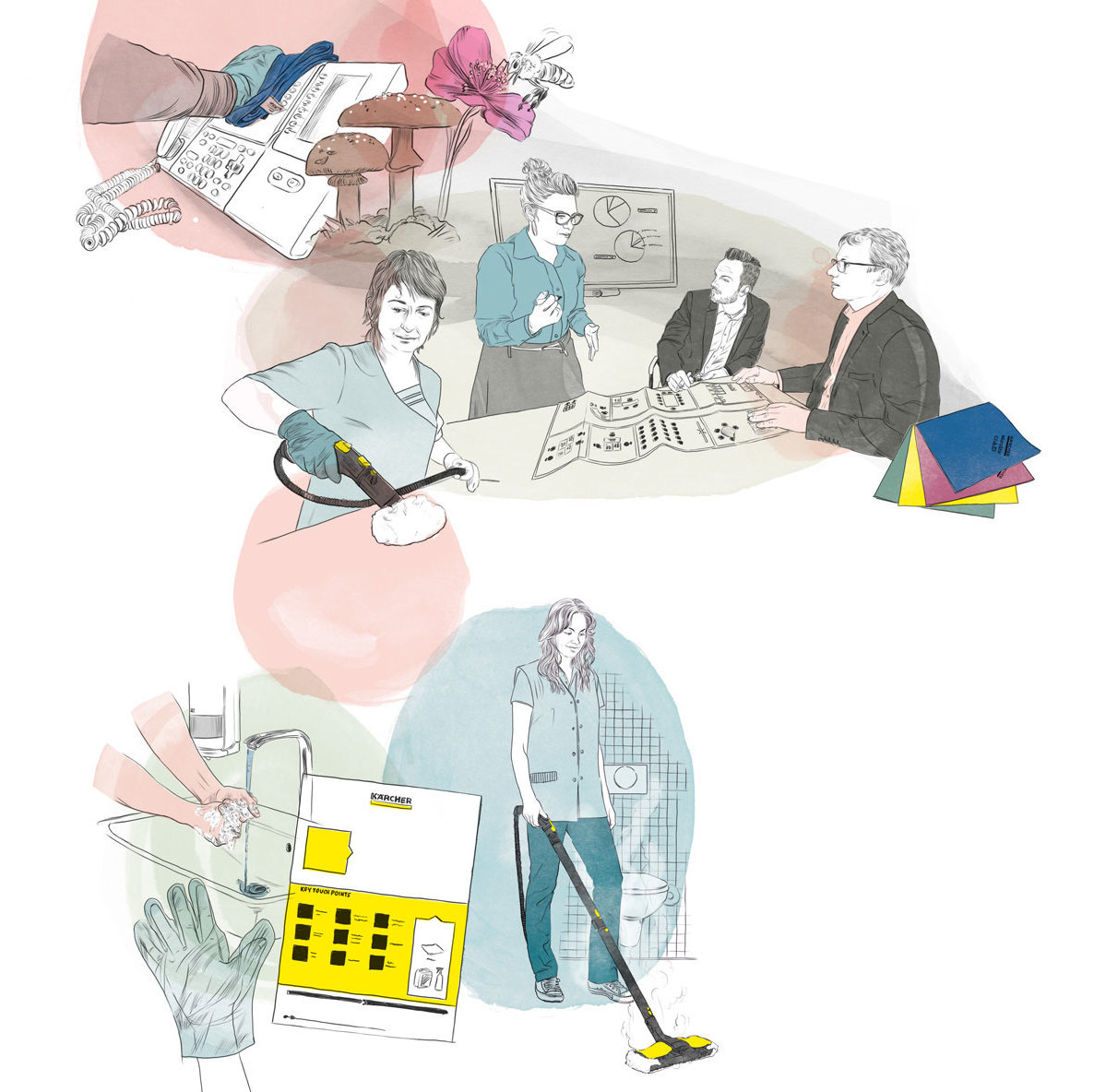
The world of cleaning is changing
“The most obvious change is new cleaning requirements,” explains Meier. “Many different protection measures have been established, for example screens at cash stations or partitions in restaurants. These items must not be forgotten during cleaning.” It is important, therefore, to adapt existing cleaning concepts to the new circumstances. In addition, good ventilation systems and air purifiers reduce the risk of spreading germs via aerosols.
Certified hygiene concepts
From employees to workspace users to visitors and guests: people increasingly want proof that hygiene measures are being carried out to the latest standards. To meet this new requirement, an increasing number of large building operators are having their hygiene concepts certified. “Incidentally, this is also highly relevant to employers,” stresses Meier. “Hygiene issues are becoming a priority for staff positioning and recruitment, because applicants are looking for safety and well-being in the workplace. There is a new emphasis on cleaning services as a result.”
New focus on digitalized solutions
For anyone wanting to provide transparent proof of hygiene measures, digitalization is an unavoidable subject. Modern systems make it possible to control and document when and where cleaning is done – using data on how much specific rooms are used, the filling levels of soap dispensers, and other factors. “Until now, cleaning-on-demand solutions were about increasing productivity and reducing superfluous walking,” explains Meier. “Now quality assurance is the new, focal driver.”
Relevance of equipment and training
To survive in this new reality, cleaners must be given appropriate equipment to guarantee health and safety in the course of their work. In a field with high staff turnover, they must also be able to acquire the expertise needed to implement hygiene concepts effectively. “We are seeing a big increase in the importance of training, consulting services, and the visual preparation of standardized cleaning concepts for specific rooms,” says Maier. “At the end of the day, above all else, we owe our health and safety to the people who complete their work conscientiously.”

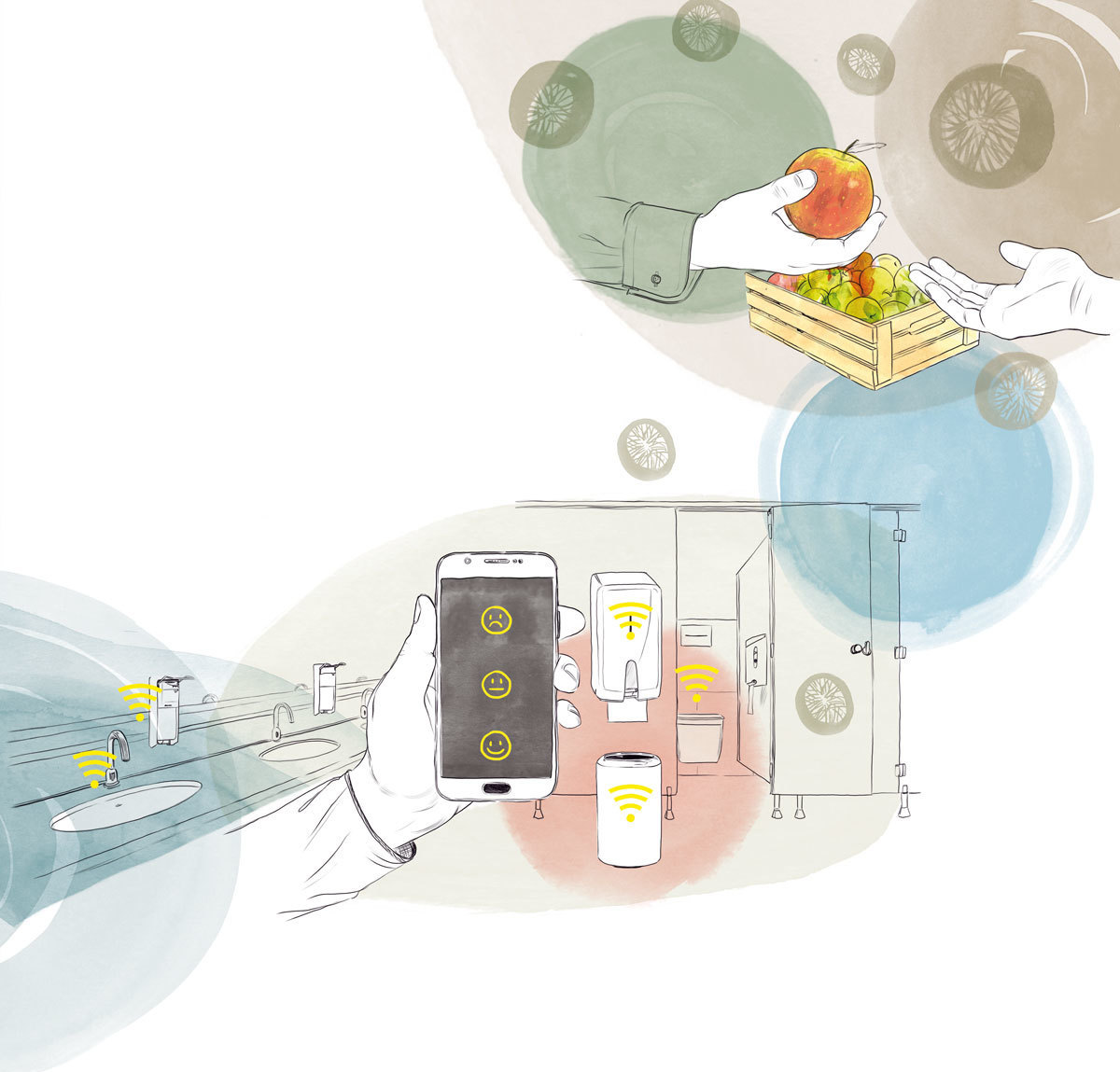
Interview with Dr Enno Maaß
From handwashing to arguments in the fruit aisle
How has the public perception of hygiene changed because of the pandemic?
In my experience, the change has taken place in phases depending on our level of knowledge about the pandemic. At the start, hand hygiene was a major issue. Everyone strictly adhered to the 20-second handwashing rule and used disinfectant. Back then, we didn’t know that infection from contaminated surfaces plays a lesser role in transmission. My view is that hand hygiene has returned to a more normal level since then. But what we are seeing is that the focus is generally more on “perceived” or subjective hygiene factors in everyday life, as people don’t always behave purely according to rational mechanisms.
What behaviors have undergone change as a result; how long term will these changes be, based on your experience?
I think there is a growing focus on the question of how we deal with closeness. It’s likely that people will continue to have a greater need for personal space, so things like appointment systems for offices or retail policies that include social distancing recommendations could remain in place. Of course, that doesn’t apply to fruit aisles at the supermarket, where it’s clear that hygiene has become a controversial issue: can you take an apple out of the crate and then put it back in? Arguments have already broken out over this in some places.
What tips can help us maintain a sense of well-being – even when surrounded by ignorance and hysteria?
We have observed a significant rise in stress levels, and many people are overwhelmed by the current situation. Figuratively speaking, not everyone still has the energy to stay calm in the fruit aisle. When people feel ready, they should gradually start enjoying their old freedoms and activities again in their everyday life, in accordance with their own assessment of the risks. Not all at once, but bit by bit. In this way, they can get their life back, have fun again and relax, which will really help to improve their general well-being.

You may also be interested in:
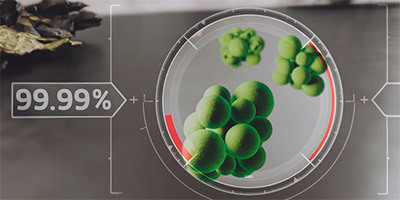
When hygiene matters most
The novel coronavirus is spreading worldwide. With simple hygiene measures, each individual can help to protect themselves and others from the life-threatening lung disease and stem its rapid spread. Our topic is dedicated to the most effective methods of protection against infection.
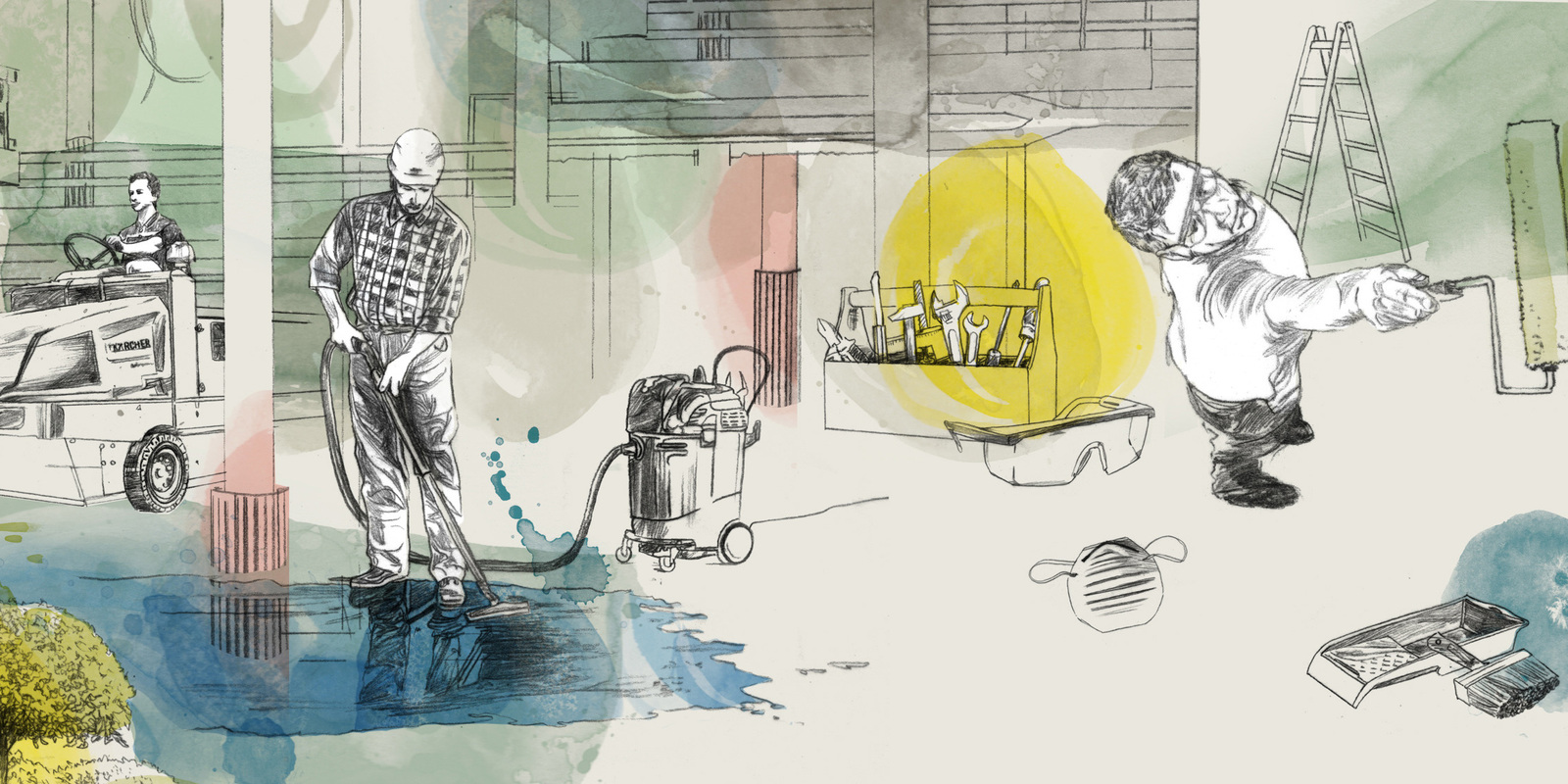
Two worlds, one goal: perfection
Even though people mostly think of patio or building cleaning, it is hard to imagine everyday life without Kärcher products, especially for workshops. Using the example of a construction site, we show where reliable cleaning technology matters and why, at the same time, the focus is on occupational safety and the protection of health. Also in the spotlight: how, over the last few decades, the model builder at Kärcher became the prototype engineer, and what traditional and modern craftsmanships there are all around the world.
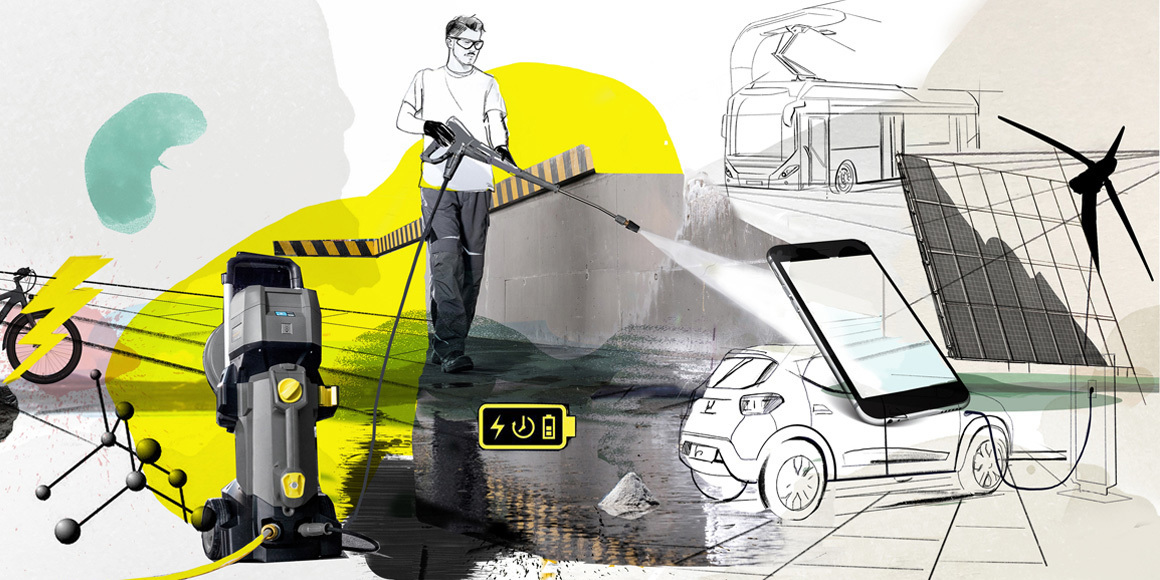
A look at the future of mobile energy storage
Everyone is talking about battery technology at the moment, and the 2019 Nobel Prize for Chemistry was even awarded for battery research. Mobile energy storage has already provided new opportunities in all areas of life – from mobile phones to electric vehicles and even medical applications. So let’s take a quick journey through the rapid development of lithium-ion technology, look at upcoming trends, and ask whether trainers really need lights.

